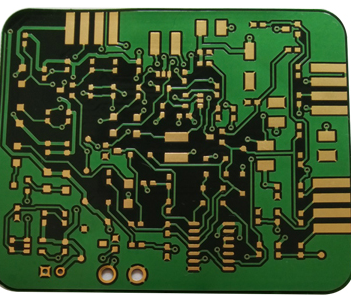Maintenance and maintenance of SMT placement machines in PCBA placement processing plants!
The smt placement machine is maintained daily, small monthly maintenance, quarterly maintenance, and annual refurbishment. SMT placement machines will inevitably have such problems after a long time. In order to prevent it from happening, reduce estimates and improve production efficiency. A regular inspection and maintenance system must be established. Now let's talk about the regular inspection and maintenance system of SMT placement machine.
1. Check every day
(1) Before turning on the power of the placement machine, check the following items:
1. Temperature and humidity: The temperature is between 20°C and 26°C, and the humidity is between 45 and 70%.
2. Indoor environment: clean air and no corrosive gas.
3. Make sure that there is no debris on the transfer rail and within the moving range of the placement head.
4. Check that there is no debris on the fixed camera and whether the lens is clean.
5. Make sure that there is no debris around the nozzle magazine.
6. Check whether the nozzle is dirty or deformed, clean or replace the nozzle.
7. Check whether the tape feeder is correctly placed in the material station, and make sure that there is no debris on the material station
8. Check the connection of air connectors, air hoses, etc.
(2) After turning on the power of the placement machine, check the following items:
If the placement machine is not working properly or is not operating normally, an error message will be displayed on the display.
1. After starting the system, check whether the display on the menu screen is normal.

2. After pressing the "Servo" switch, the indicator light should turn on. Otherwise, restart after shutting down, and then turn it on again.
3. Can the emergency switch work normally?
4. Check whether the placement head can return to the starting point (source point) correctly.
5. Check if there is any abnormal noise when the placement head moves.
6. Check whether the negative pressure of the nozzles of all placement heads is within the range.
7. Check whether the PCB runs smoothly on the guide rail. Check whether the sensor is sensitive.
8. Check whether the edge positioning and needle positioning are correct.
2. Monthly inspection
(1) Clean the screen and floppy disk drive of CRT
(2) X, Y axis-when the placement head is moving, make sure that there is no abnormal noise on the X and Y axis.
(3) Cable-Make sure that the screws on the cable and cable bracket are not loose.
(4) Air connector-make sure that the air connector is not loose.
(5) Air hose-check the pipe and connection. Make sure that the air hose is not leaking.
(6) X and Y motors-make sure that the X and Y motors do not heat up abnormally.
(7) Overtravel alarm-move the placement head along the positive and negative directions of the X-axis and Y-axis. When the placement head moves out of the normal range, the alarm should sound and the placement head can stop moving immediately. After the alarm, use the manual operation menu to make sure that the placement head can run.
(8) Rotating motor-check the timing transmission belt and gears for stains. Make sure that the placement head can rotate without obstacles. Ensure that the mounting head has sufficient torque.
(9) Z-axis motor-check whether the placement head can move up and down smoothly. Push up the nozzle with your finger to see if it moves smoothly. Move the placement head up and down out of the normal range respectively, and check whether the alarm can sound and the placement head can be stopped immediately.
(10)S motor (if there is a scanning CCD) one by one ensures that the scanning head can move smoothly.
(11) Negative pressure-check the negative pressure of all placement heads. If the negative pressure value is abnormal, clean the filter in the nozzle shaft. If the filter in the vacuum exhaust pipe is dirty (black), replace it.
(12) Conveyor rail-check the movement of the conveyor rail. Check the tightness of the conveyor belt. Check that there are no stains, scratches and debris on the conveyor belt. Check the automatic width adjustment of the guide rail. Check the movement when the maximum width and minimum width are adjusted. At the entrance and exit, check the parallelism of the rails and the transmission of the PCB.
(13) PCB limiter-check its movement and noise.
(14) Side clamping, rear top block, buffer stop-check their wear.
(15) The fixture on the nozzle magazine-check for flexibility and wear.
(16) Camera-Clean the lens and light box of all cameras.
(17) Camera lighting device-check its movement and brightness.
(18) Operation switch-check whether all brakes can work normally on the VO signal screen. Check the emergency stop switch.
(19) Warning lights-make sure that all lights are on. Make sure that they are installed firmly.
(20) Hazard alarms and warning alarms are checked one by one to see if they can sound.
(21) Camera-"image detection".
(22) Pick-up point coordinate value-check the pick-up point coordinate value of the feeder station.
(23) Placement position-make sure that the components can be assembled to the specified location.
The above mentioned the daily inspection, maintenance work and monthly inspection and maintenance work of the smt placement machine. SMT placement machine regular inspection and maintenance system must be paid attention to and implemented